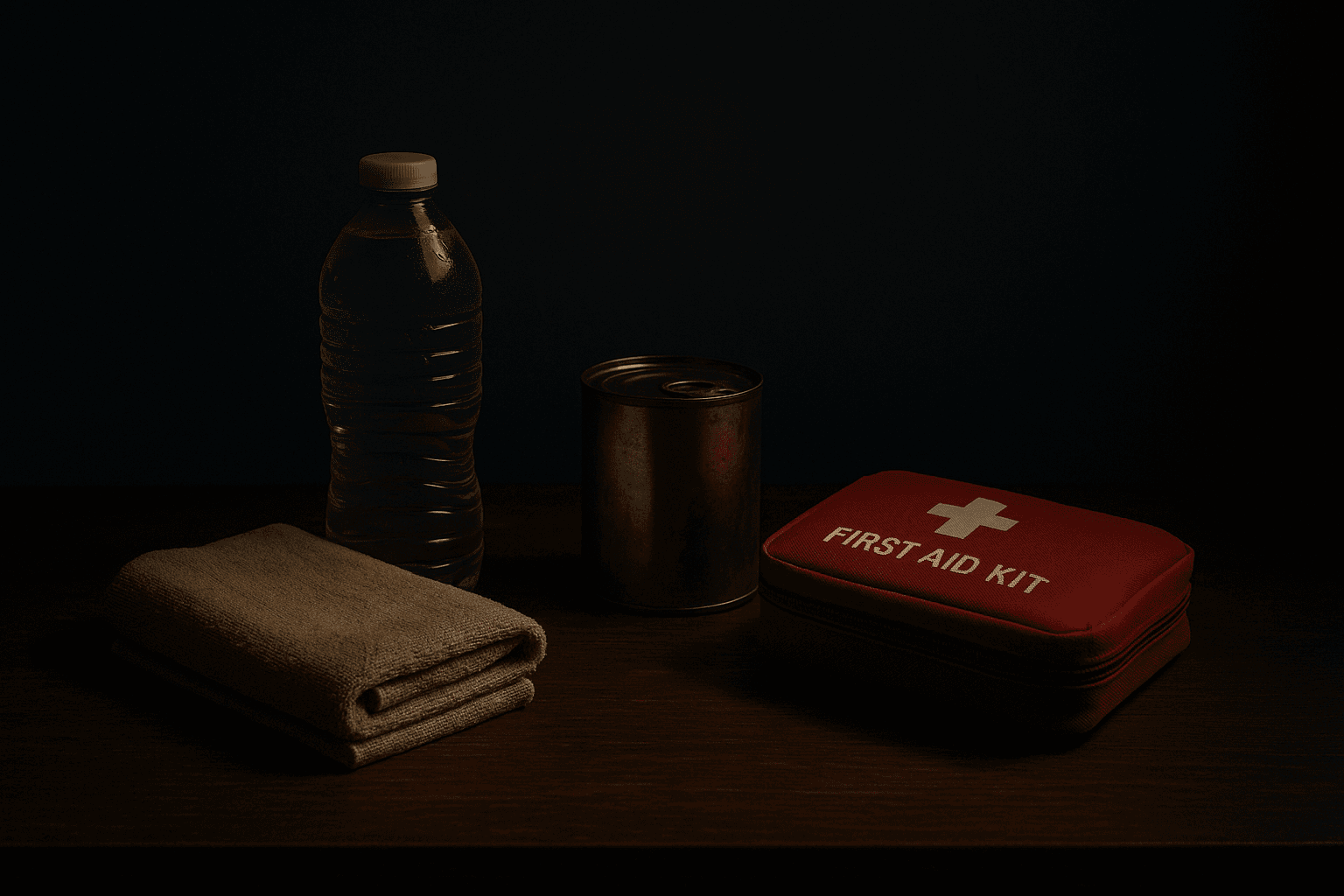
Sustain physiological, sustenance, and hygienic requirements when essential services fail.
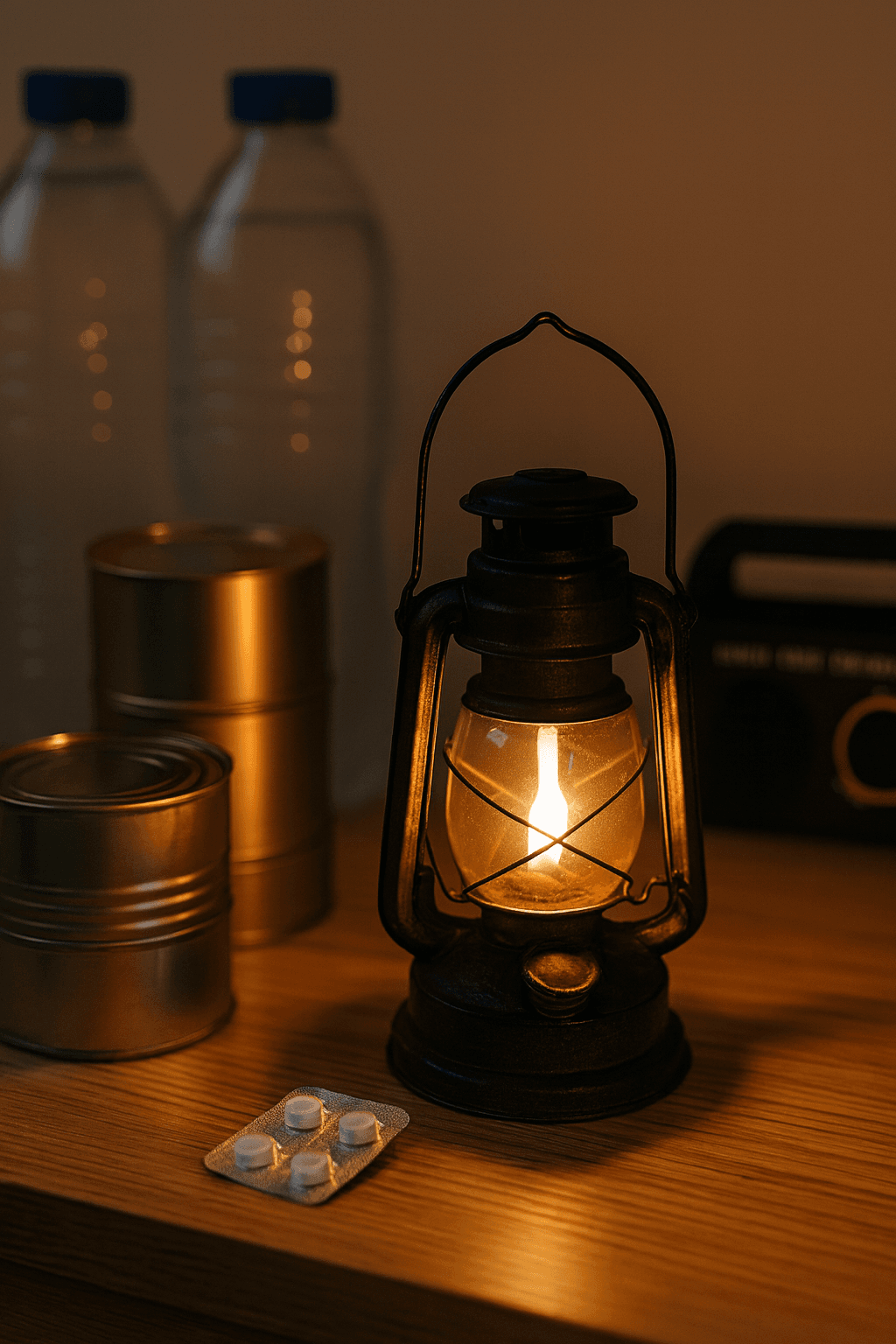
Physical resilience begins with control over the tangible: food, water, shelter, and medicine. Every society that faces natural or man made disasters arrives at the same principle: citizens who can meet their own basic needs for a limited time preserve freedom of action for those responding to the crisis and decrease suffering.
Preparedness is not hoarding; it is continuity. The goal is to buy time for emergency systems to stabilize, for supply chains to resume, or for a community to self-organize to meet the needs of the population.
Physical resilience, therefore, is measured in three timeframes:
- Immediate (72 hours) – survive and stabilize.
- Mid-Term (weeks) – sustain health, sanitation, and communication.
- Long-Term (months) – adapt lifestyle and infrastructure to endure sustained disruption.
The First 72 Hours
Objective: Preserve life and stability during total service interruption (no grid, no tap water, no outside help).
Principles (PACE mindset):
Primary: normal utilities
Alternate: battery/propane/solar
Contingency: manual methods (boil, gravity filter, blankets)
Emergency: relocation/go-bag
Preparedness begins with simple, deliberate action. A 72-hour plan turns uncertainty into control—each item you pre-stage becomes time bought when systems fail. The goal isn’t perfection, it’s continuity: the ability to stabilize, adapt, and help others before help arrives.
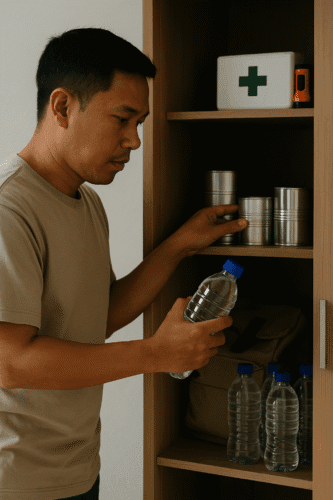
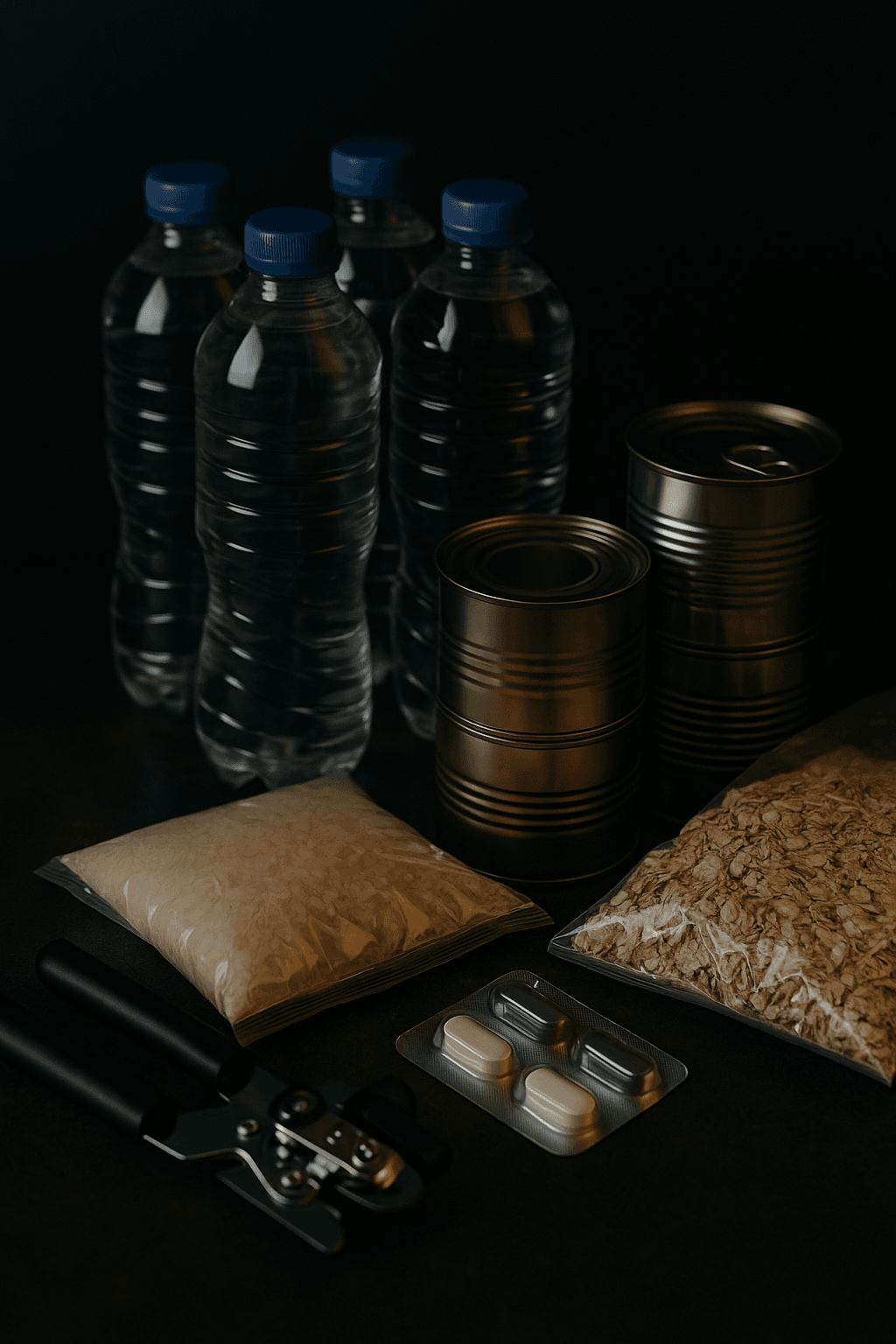
Food & Water
Water: Minimum 6 liters per person (3 days @ 2 L/day for drinking/cooking). More in hot climates, pregnancy, or for formula.
Food: No-cook or quick-cook staples: canned proteins, beans, oats, pasta, rice, nuts, peanut butter, powdered milk.
Openers & tools: Manual can opener; lightweight stove (butane/propane/alcohol) rated for indoor use with ventilation; matches/lighter.
Rotation rule: Eat what you store; store what you eat—mark dates with a sharpie.
Pitfalls to avoid: “mystery pantry” (unfamiliar foods), no opener, only freezer foods, spicy/high-fiber foods without extra water.

Heat & Shelter
Safe heat: Candle heaters, catalytic/propane units, or solid-fuel stoves with CO detector and ventilation.
Warmth: Mylar blankets + sleeping bags; layer clothing; designate the warmest room and consolidate there (door drafts blocked).
Draft control: Towels/blankets at doors/windows; close unused rooms.
Red flags: Any headache/dizziness—suspect CO, ventilate immediately, move outside, call emergency services.
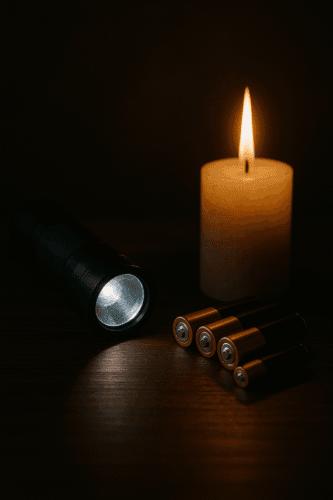
Power & Light
Light: Battery lanterns + headlamps (hands-free).
Power: Two power banks in rotation + one sealed reserve; crank radio if available.
Discipline: Phones are for comms only—not primary light.
Quick test: Can you run light + radio + phone charging for 72 hours without grid? If not, add one more bank or lantern.
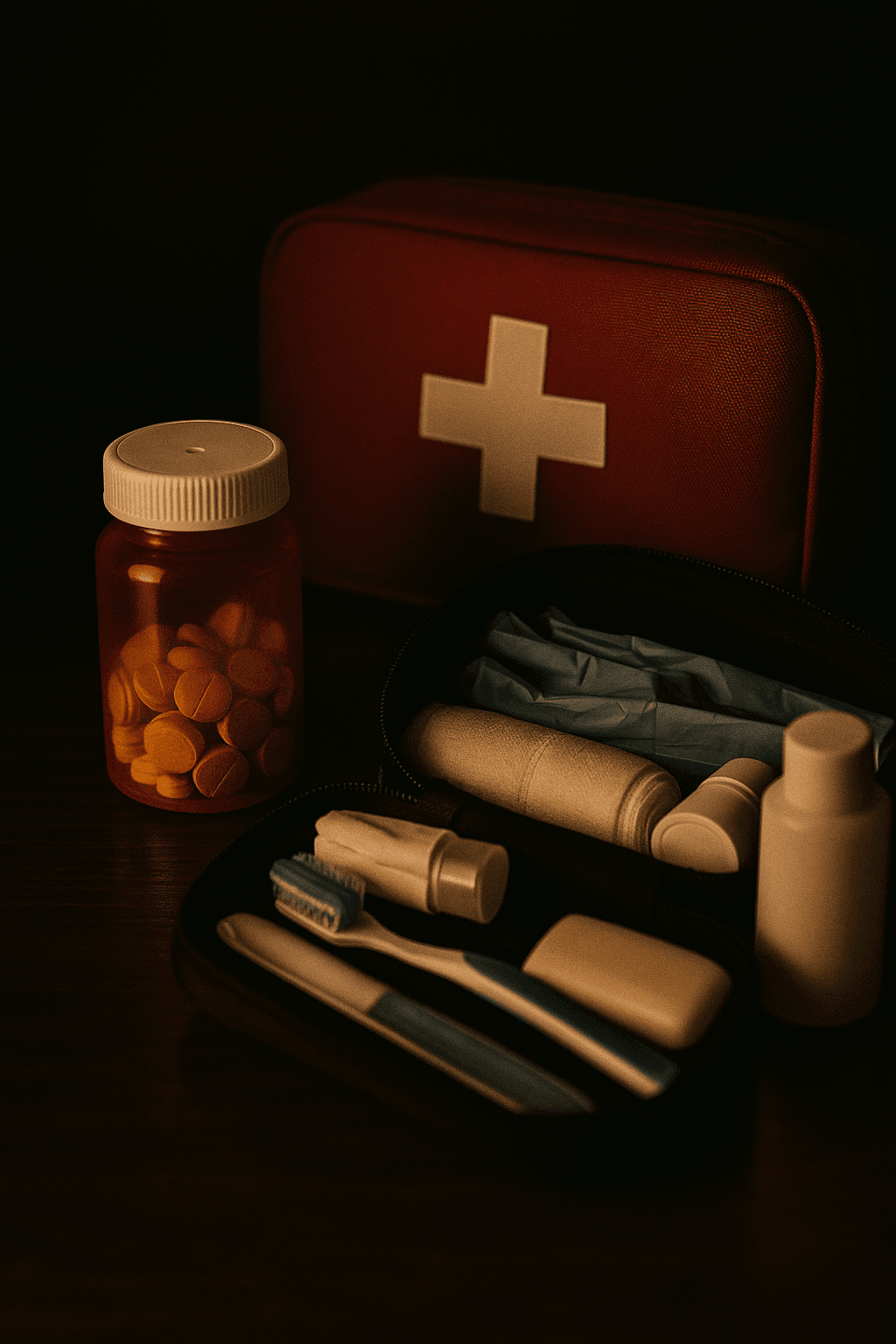
Medicine & Health
Medications: 7-day minimum on hand; printed list of prescriptions/doses and provider contacts (keep a photo copy offline).
First aid: Bandages, disinfectant, gloves, oral thermometer, antihistamine, pain reliever, ORS packets, small trauma kit (tourniquet, gauze).
Hygiene: Hand sanitizer, baby wipes, trash bags; minimize GI upsets by sticking to familiar foods.
Behavioral: Keep a simple routine (sleep/wake/meals) to lower stress response; daylight exposure daily.
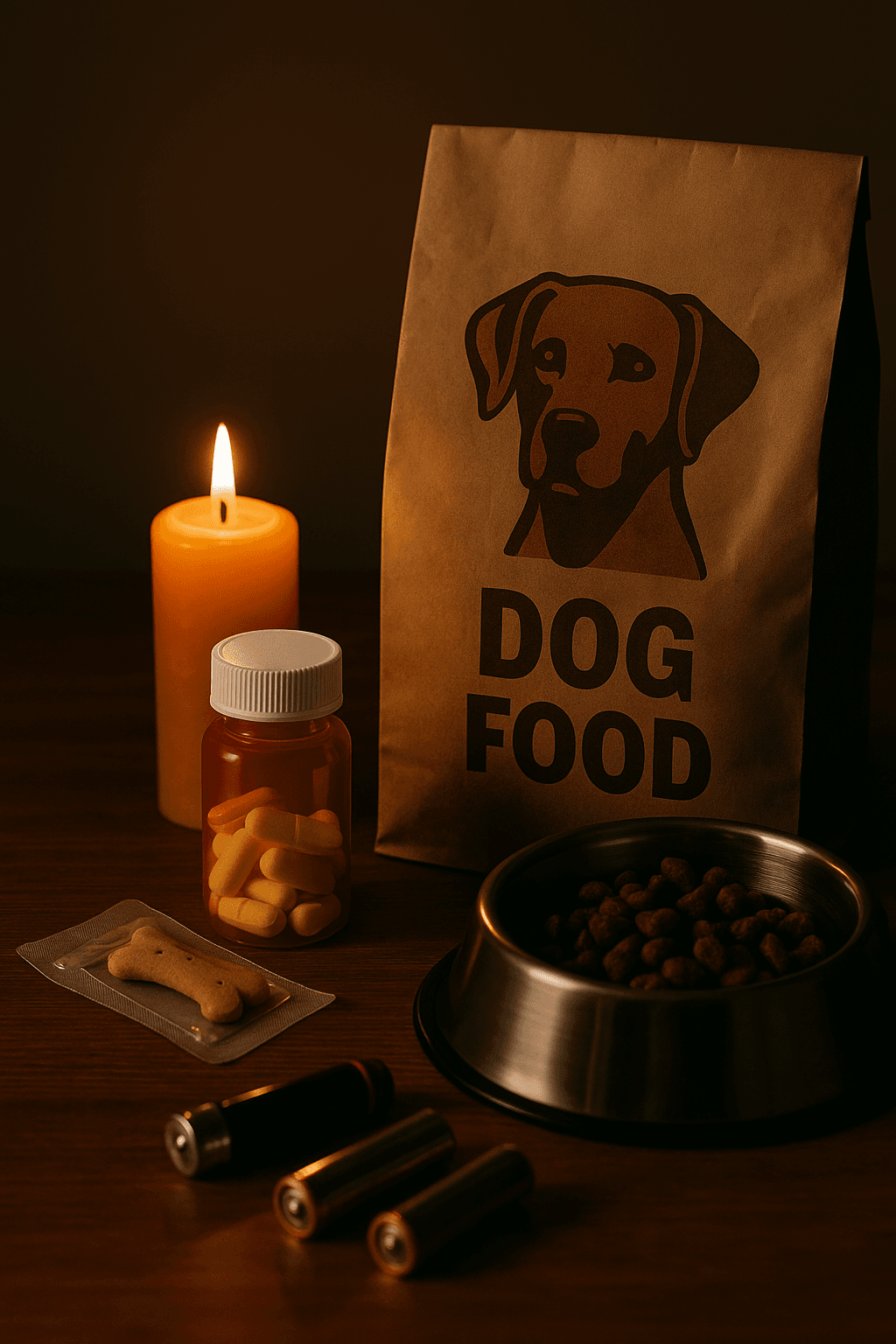
Pets & Dependents
Supplies: Food, water, meds for 3+ days; leashes/crates; litter/waste bags.
Docs: Vaccination records with the go-bag; pet-friendly shelter/relative identified.
Elder or Infant Care: Ensure sufficient back up supply of nutrition, medication, or specialized hygiene products for the very old or very young in your care.
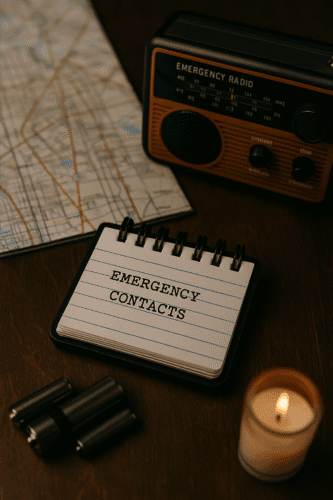
Communication & Wayfinding
Info cadence: Check official updates on the hour, not constantly. Maintain an emergency radio, tuned to emergency management frequencies. Train periodically on its use.
Contacts: One out-of-area contact for check-ins; family rally point pre-designated.
Navigation: Maintain paper maps and road atlases to assist navigation in cellphone and GPS disruption.
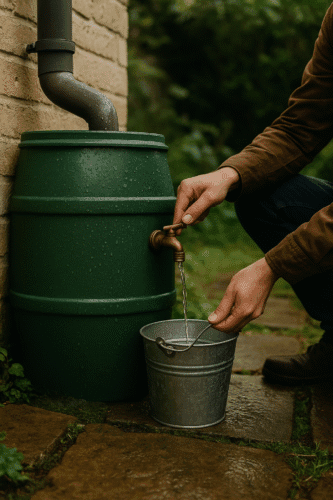
Mid-Term Phase: Sustaining Weeks of Disruption
Objective: Transition from emergency survival to sustainable living.
At this stage, the goal is no longer endurance — it’s continuity. You begin scaling from individual preservation to shared resilience: stable food cycles, sanitation, power, and communication networks that can last for weeks without restoration of central systems.
Food Systems: The Rolling Pantry
A rolling pantry means eating from your reserves as part of normal life—using older goods first and replacing them regularly. This converts static stockpiles into active systems.
Mid-term readiness includes a mix of canned proteins, dried staples, and key seasonings, allowing you to cook balanced meals even under restrictions.
The principle: consume, replenish, repeat — continuity through routine.
Water and Sanitation: Purify and Reuse
Once stored water runs low, replenishment becomes essential.
Rain collection systems, portable filters, or gravity-fed purifiers can sustain household supply when utilities fail. Boiling and purification tablets handle microbes; filtration handles sediment and taste.
Greywater reuse—such as using rinse water for toilets or outdoor cleaning—extends reserves and reduces waste.
In mid-term adaptation, sanitation also scales: bucket toilets with disinfectants or composting systems preserve hygiene until services return.
Power and Fuel: Multi-Source Redundancy
When batteries fade and generators burn through reserves, diversification matters.
Propane, wood, and solar generators each meet different needs: cooking, heating, charging, and lighting.
The mid-term solution is layered redundancy—solar during day, fuel or battery at night.
Critical devices (radios, routers, medical gear) should cycle through backup power on a set schedule to prevent depletion.
At this stage, households can pool resources—shared charging, communal cooking—to maximize efficiency and conserve fuel.
Health and Hygiene: Sustain the Body and Mind
Health is no longer about first aid; it’s about continuity.
Maintain prescription schedules by refilling early when possible, and store backups for chronic conditions. Stock rehydration salts, fever reducers, and basic antibiotics (where legally available).
Hygiene becomes daily maintenance: clean hands, oral care, safe waste handling.
Equally important is mental health—routine, daylight exposure, and physical activity prevent fatigue and depression in extended isolation.
Community Integration: Shared Strength
Individual preparedness scales through connection.
Neighborhood readiness groups become micro-grids of resilience—exchanging tools, information, and assistance.
Establish common meeting points, backup equipment sharing, and rotational duties for safety checks or water collection.
A simple, consistent communication rhythm—such as scheduled radio or phone check-ins—prevents panic and amplifies problem-solving capacity.
Resilience at this stage is social as much as logistical.

Long-Term Resilience: Scaling from Survival to Continuity
Why Long Term?
Preparedness matures when it stops being a response and becomes a rhythm. Each phase—immediate, mid-term, and long-term—forms a continuum of adaptation. The first 72 hours preserve life; the following weeks sustain health and connection; the months that follow build independence and renewal. The systems established early—food, water, heat, medicine, communication—scale naturally when they’re maintained, tested, and shared. The goal is not to prepare for every crisis, but to build a way of living that can absorb disruption without collapsing.
Food and Resource Cycles
The pantry becomes a rotation system, and the rotation becomes a garden.
Dried goods and canned reserves give way to local production—sprouting seeds on a windowsill, maintaining small garden plots, or coordinating community growing spaces. Preservation methods like drying, fermenting, and pickling extend self-sufficiency. These are not survival skills; they’re continuity skills—simple, sustainable ways to maintain nutrition when logistics slow down.
Energy and Infrastructure Independence
In the long term, energy continuity replaces energy storage.
Solar panels, small wind units, or thermal mass systems reduce dependency on unstable grids. Shared energy cooperatives—neighbors with generators or solar arrays—can support multiple homes. Maintenance and testing become routine: clearing filters, cycling batteries, cleaning panels. Independence is not isolation; it’s shared reliability within a network of households that prepare together.
Water, Sanitation, and Waste
Rain barrels evolve into full filtration and reuse systems.
Greywater becomes an asset instead of a liability, and composting toilets or dry waste methods replace panic improvisation. These systems create predictable cycles of use and renewal, reducing risk of disease and extending limited resources indefinitely. Resilience scales when conservation is built into daily behavior, not just emergency planning.
Health and Continuity of Care
Medical preparedness extends beyond first aid—it becomes health literacy.
Knowing how to manage chronic conditions, maintain fitness, and apply preventive care reduces dependency on overstressed systems. Stock rotation for medication parallels food and fuel cycles. Local medical cooperatives or informal mutual-aid networks can distribute basic supplies, training, and knowledge where formal care is limited.
Social and Structural Integration
No household is an island of resilience.
Long-term adaptation depends on shared information, skill exchange, and collective responsibility. Neighborhood repair groups, seed libraries, or shared maintenance workshops transform individual preparedness into local stability. The same radio network or check-in system established in the mid-term phase becomes the backbone of civil continuity—linking isolated homes into a functioning, interdependent network.
The Synergy of Systems
Each system—food, water, energy, health, and communication—feeds the others.
Resilience is cumulative, not parallel. The reliability of one enables flexibility in another: stable power supports sanitation; clean water reduces medical demand; community coordination optimizes scarce resources.
Preparedness becomes lifestyle when these systems no longer exist in isolation, but as a closed loop of renewal and support—a living framework that sustains itself through practice and cooperation.
Physical resilience is not built in a day—it’s layered through habit, foresight, and quiet repetition. Each phase, from the first 72 hours to the long months of disruption, strengthens the next. The households that endure are not the most stocked, but the most practiced—the ones that know how to adapt, repair, and share. Preparedness is a living system, not a stockpile.
Explore the full Preparedness Guide Repository for detailed, government-validated resources on food security, sanitation, energy continuity, and civil readiness. Each guide deepens one layer of resilience and helps turn planning into practice.
